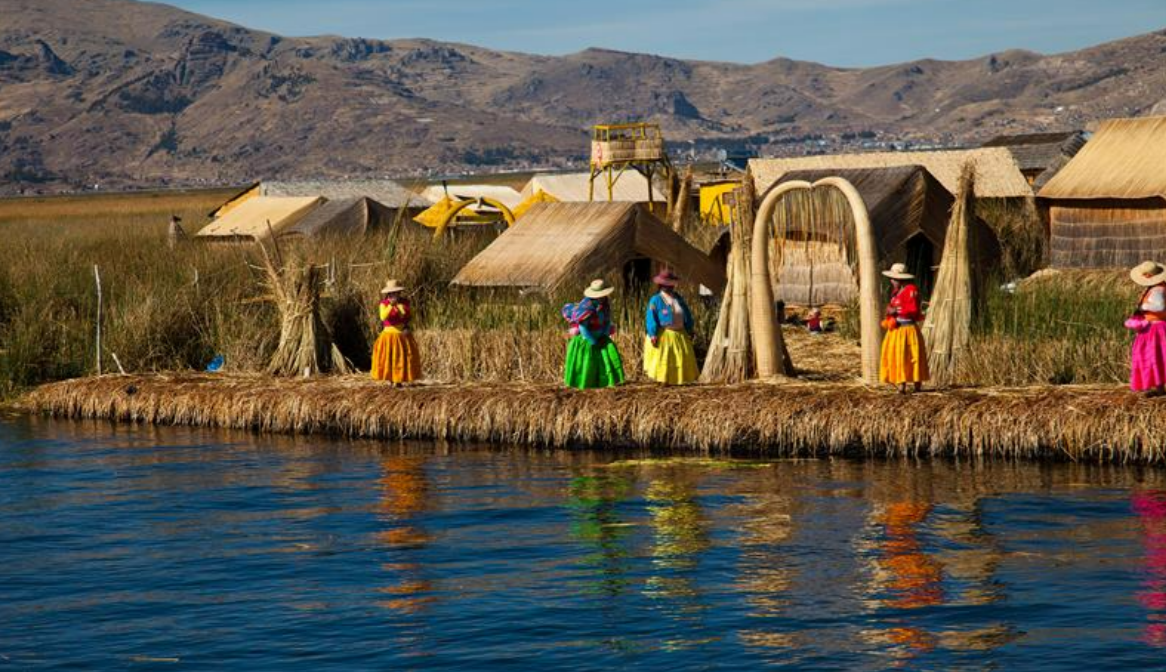When Indigenous Uros people arrived at Lake Titicaca hundreds of years ago, they built dozens of artificial islands to protect themselves from hordes of angry Inca – and many haven’t moved since.
Lake Titicaca is a freshwater lake nestled in the Andes mountains on the border of Bolivia and Peru. It’s the largest lake in South America by most metrics and, located at an elevation of 3,812 meters (12,507 feet) above sea level, it’s one of the highest lakes in the world.
Dotted along the lake’s western corner near the Peruvian city of Puno, you can find dozens of artificial islands. Several thatched houses and structures sit on each island, some of which are only 30 meters (98 feet) or so wide, although larger ones exist.
The floating platforms are crafted by stacking layers upon layers of stitched totora roots and reeds, according to BBC Earth. The totora plant is integral to life on the lake. Its sturdy rhizome fibers are used to make houses, boats, roofs, mattresses, and more, as well as used to make tea, traditional medicine, and culinary dishes known as “lake banana”). Apparently it’s not a bad hangover cure either.

The lifestyle of the Uros people is one of centuries-old tradition, as well as solar panels, satellite dishes, and motorboats.
Image credit: Gail Johnson/Shutterstock.com
So the story goes, this unusual living arrangement emerged in the pre-Columbian era when the ambitious Inca Empire began encroaching into the mainland villages of Uros. The Uros villages migrated to Lake Titicaca where they built these floating platforms. If marauding Inca came their way, the Uros could push these artificial islands out to the middle of the lake and flee their wrath.
The threat of the Inca Empire has long passed, but the tradition remains strong. Even today, it’s estimated around around 1,300 people live on some 100 constructed islands that lay on Lake Titicaca. Estimates of the number of islands vary source by source, but most say there are currently somewhere between 60 to 120.
Maintaining the lifestyle isn’t easy. While totora is a tough and much-valued material, the thatched organic material degrades due to the forces of nature over time, meaning the islands and homes are in a constant state of repair.
However, the traditional way of life isn’t without its modern perks. Many of the islands have solar panels that power lights, radios, and television satellites. The lake’s artificial islands have also become a must-see spectacle for tourists, with some locals even renting out their totora-thatched homes to travelers on Airbnb.
Source Link: Lake Titicaca Has Been Home To Human-Made Floating Islands For Centuries